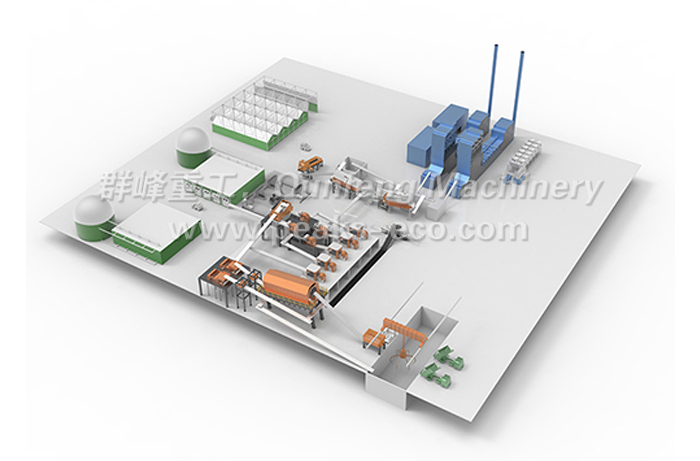What is waste sorting system?
Waste management is a critical aspect of environmental conservation and sustainable living. As global populations continue to grow and urbanize, the amount of waste generated has also increased exponentially. In response to this challenge, waste sorting systems have emerged as vital tools in efficiently managing and recycling waste. This article explores the concept of waste sorting systems, their importance, and the positive impact they have on the environment.
Definition of Waste Sorting System:
A waste sorting system refers to a set of processes and technologies designed to segregate and categorize different types of waste at the source or in designated facilities. The primary goal is to separate recyclable materials from non-recyclables, thereby facilitating effective recycling and minimizing the amount of waste sent to landfills.
Components of a Waste Sorting System:
a. Collection Bins and Containers:The first step in waste sorting is at the source, where individuals or businesses dispose of their waste into designated collection bins. These bins are often color-coded or labeled to guide users on the type of waste they should deposit.
b. Conveyor Belts and Sorting Equipment:In larger waste sorting facilities, conveyor belts and automated sorting equipment play a crucial role. These machines help streamline the process by transporting waste to sorting stations where various technologies, such as sensors and magnets, are employed to separate materials based on their properties.
c. Manual Sorting Stations:In addition to automated systems, manual sorting stations may be utilized to further refine the sorting process. Skilled workers can identify and separate materials that automated systems might struggle to discern.
d. Compactors and Balers:After sorting, compactors and balers are used to compress and bundle materials for easier transportation and recycling. This step optimizes storage space and reduces transportation costs.
Benefits of Waste Sorting Systems:
a. Resource Recovery:Waste sorting systems contribute to resource recovery by identifying and extracting valuable materials from the waste stream. These materials can then be recycled, reducing the need for new raw materials and lessening environmental impact.
b. Reduction in Landfill Waste:By diverting recyclable materials from landfills, waste sorting systems help decrease the volume of waste that contributes to environmental pollution and greenhouse gas emissions.
c. Promotion of Circular Economy:Waste sorting aligns with the principles of a circular economy, where materials are reused, recycled, or repurposed, minimizing the need for constant extraction of new resources.
d. Environmental Conservation:Effective waste sorting and recycling contribute to environmental conservation by conserving energy, reducing pollution, and mitigating the depletion of natural resources.
Waste sorting systems are pivotal in the transition towards more sustainable waste management practices. By encouraging responsible disposal and separating materials for recycling, these systems play a crucial role in minimizing environmental impact, conserving resources, and fostering a more circular and sustainable approach to waste management. As global awareness of environmental issues grows, the importance of waste sorting systems in creating a cleaner, greener future cannot be overstated.





